Welcome back to a taste of childhood with this irresistible School Cafeteria Spaghetti recipe! This easy, homemade dinner promises to transport you straight back to simpler times, filled with fond memories of bustling lunchrooms and comforting meals. Crafted with straightforward ingredients and bursting with a flavor that’s both familiar and incredibly satisfying, this dish is destined to become a beloved staple in your family’s regular rotation. Get ready to recreate a classic that’s quick to prepare, deeply flavorful, and perfect for any night of the week.
Revisiting Childhood: The Ultimate Old School Cafeteria Spaghetti Recipe
Do you remember those days when school cafeterias prepared meals from scratch, brimming with a unique charm that only homemade food could offer? For many of us, those were the golden years of lunch breaks, where simple dishes held an extraordinary appeal. I vividly recall my mother working in our school’s cafeteria, contributing to those very meals. Whether it was the boundless energy of youth, the constant hunger of a growing child, or simply the magic of nostalgia, those lunches tasted absolutely divine. This particular School Cafeteria Spaghetti recipe is one of those cherished culinary gems I’ve held onto for decades, a true homage to those beloved childhood flavors.
What makes this spaghetti so special? It’s not just the taste; it’s the ease of preparation and the nostalgic comfort it provides. Using a handful of pantry staples, you can whip up this savory spaghetti in approximately 30 minutes, making it an ideal choice for busy weeknights when you crave something wholesome and satisfying. If you’re yearning for a delightful journey back in time, even just for an evening, then preparing this authentic School Cafeteria Spaghetti recipe is an absolute must. It’s more than just a meal; it’s an experience, a memory served hot and hearty on a plate.

Your Top Questions Answered About School Cafeteria Spaghetti
Absolutely! While classic ground beef is the traditional choice for this nostalgic recipe, feel free to experiment with other meats to suit your dietary preferences or to introduce a different flavor profile. Ground turkey or ground chicken are excellent leaner alternatives, offering a lighter texture while still absorbing the rich flavors of the sauce. For those looking to add a bit more zest and depth, a mixture of ground beef and Italian sausage (mild or spicy, depending on your preference) can elevate the dish significantly, imparting a wonderful savory kick reminiscent of a more robust Bolognese. Whichever you choose, ensure it’s cooked thoroughly and drained of excess fat for the best results.
Yes, you certainly can use canned diced tomatoes for convenience. However, for a texture that truly replicates the authentic school cafeteria experience, using whole canned tomatoes and dicing them by hand is often preferred. This method allows you to control the size and consistency of the tomato pieces, creating a more varied and rustic texture in your sauce. Pre-diced tomatoes can sometimes be too fine, losing some of that satisfying chunky bite that makes this spaghetti so distinctive. Plus, by keeping the juice from the whole tomatoes, you ensure maximum flavor and moisture in your sauce, rather than potentially losing it with pre-drained diced varieties.
Adding a touch of granulated sugar to the spaghetti sauce serves a crucial purpose: it helps to balance and cut through the natural acidity of the tomatoes. Tomatoes, especially canned varieties, can sometimes impart a sharp tang to the sauce. Sugar doesn’t necessarily make the sauce sweet; rather, it mellows out that acidity, creating a more harmonious and well-rounded flavor profile that is both savory and comforting. While you can omit it if you prefer, I highly recommend including it. This was a common practice in many traditional, old-school spaghetti recipes, including the original cafeteria version, and it contributes significantly to the characteristic taste of this dish.
Absolutely! While the name “School Cafeteria Spaghetti” implies spaghetti noodles, you are welcome to use any other pasta shape your heart desires. This versatile sauce pairs wonderfully with various pastas. We’ve successfully made it with rotini, penne, rigatoni, or even elbow macaroni for a fun twist that kids often adore. The key is to ensure you use one pound of pasta, regardless of the shape, to maintain the correct sauce-to-pasta ratio. Different pasta shapes will also interact with the sauce differently; for example, ridged pastas like penne or rigatoni are excellent at catching and holding onto the hearty meat sauce, ensuring a flavorful bite every time.
Storing leftovers of this delicious spaghetti is incredibly simple, making it a fantastic make-ahead meal or for planned lunch prep. Once cooled, place the spaghetti in an airtight container and refrigerate it. It will keep beautifully for up to 4 days, with the flavors often developing even further overnight. For longer storage, this spaghetti freezes exceptionally well. Transfer the cooled spaghetti to a freezer-safe container or heavy-duty freezer bags, ensuring as much air is removed as possible. It can be frozen for up to 3 months. To defrost, simply move it from the freezer to the refrigerator overnight. To reheat, place the desired portion in a microwave-safe bowl, cover it with a paper towel (to prevent splattering and retain moisture), and microwave on high for 1½ to 2 minutes, or until thoroughly warmed through. You can also gently reheat it in a pot on the stovetop over low heat, adding a splash of water or broth if it seems too thick.
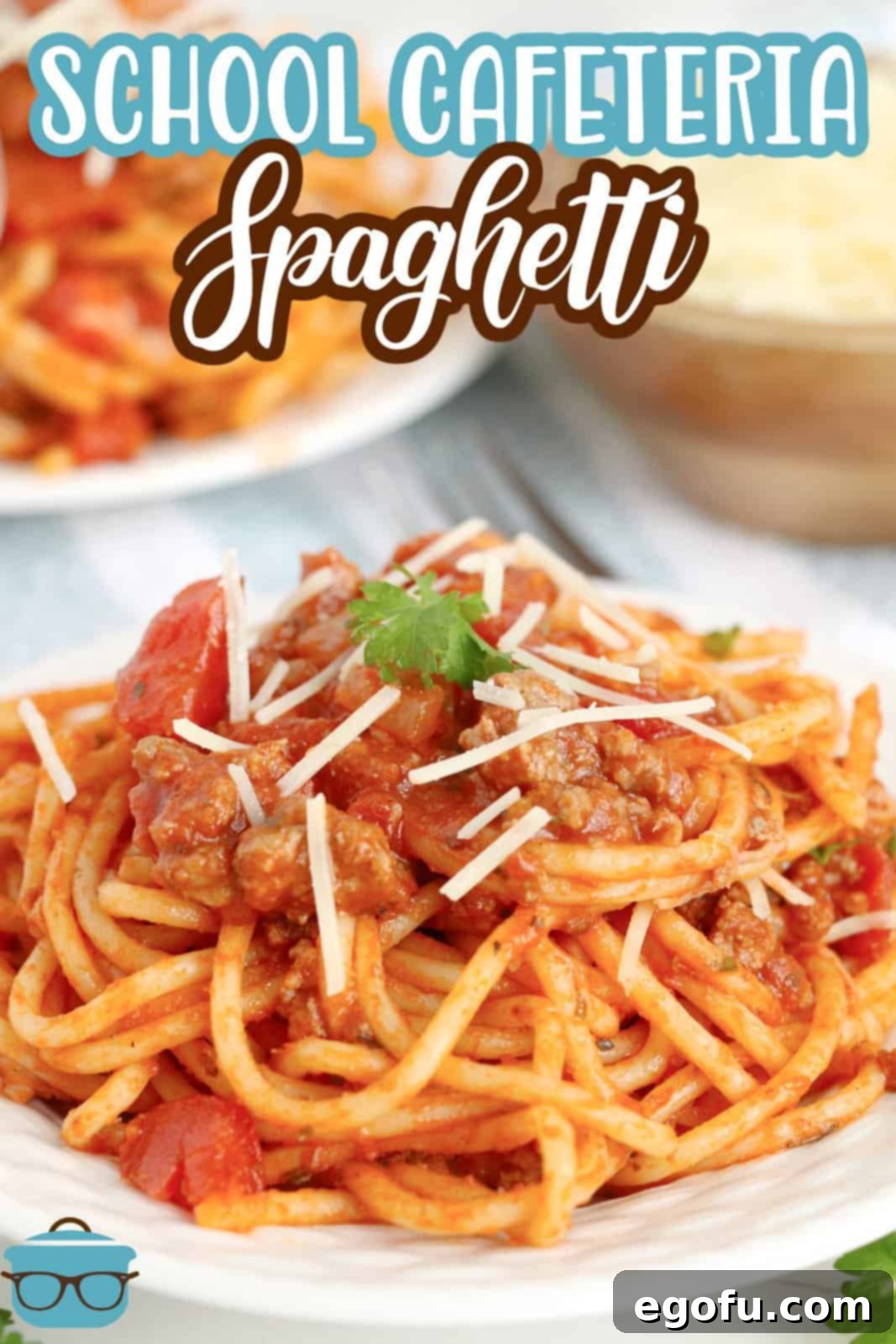
Essential Ingredients for Your Cafeteria Spaghetti
Crafting this beloved School Cafeteria Spaghetti requires a selection of readily available ingredients, many of which you likely already have in your pantry. These simple components combine to create a remarkably complex and comforting flavor profile.
- Ground beef
- Yellow onion
- Dry spaghetti sauce mix
- Canned whole tomatoes
- Tomato paste
- Granulated sugar
- Worcestershire sauce
- Italian seasoning
- Dried basil
- Garlic powder
- Salt and pepper
- Spaghetti
- Shredded Parmesan cheese
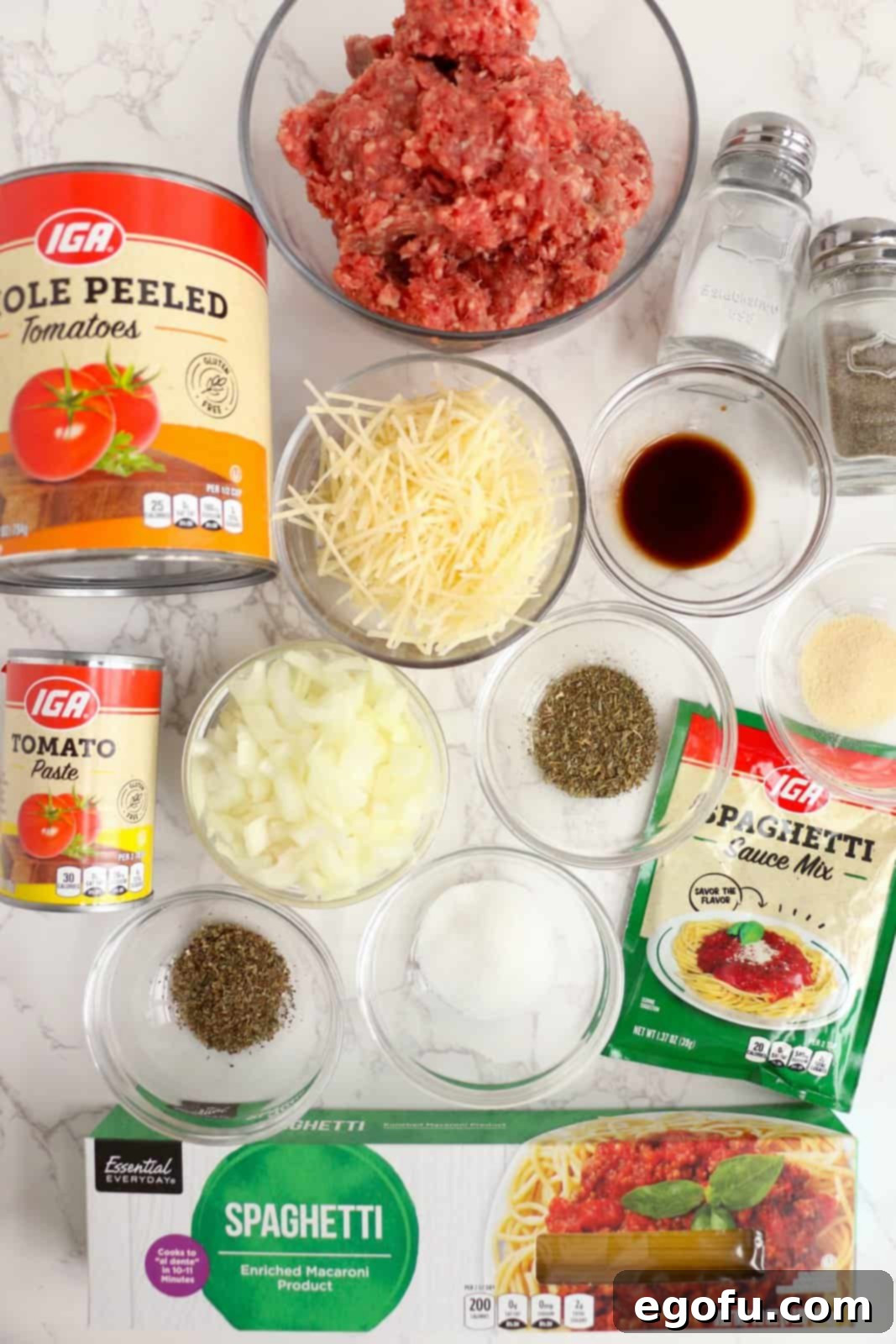
Step-by-Step Guide: How to Make School Cafeteria Spaghetti
Bringing this classic dish to life in your own kitchen is surprisingly simple. Follow these straightforward steps to create a hearty, flavorful spaghetti that your whole family will adore, perfect for a cozy weeknight dinner.
Step 1: Brown the Beef and Onion. Begin by heating a large skillet over medium heat. Add your ground beef along with the minced yellow onions. Cook, breaking the beef into small, uniform pieces as it browns. This ensures a fine texture characteristic of cafeteria-style spaghetti. Continue cooking until the beef is fully browned and the onions are translucent and fragrant.
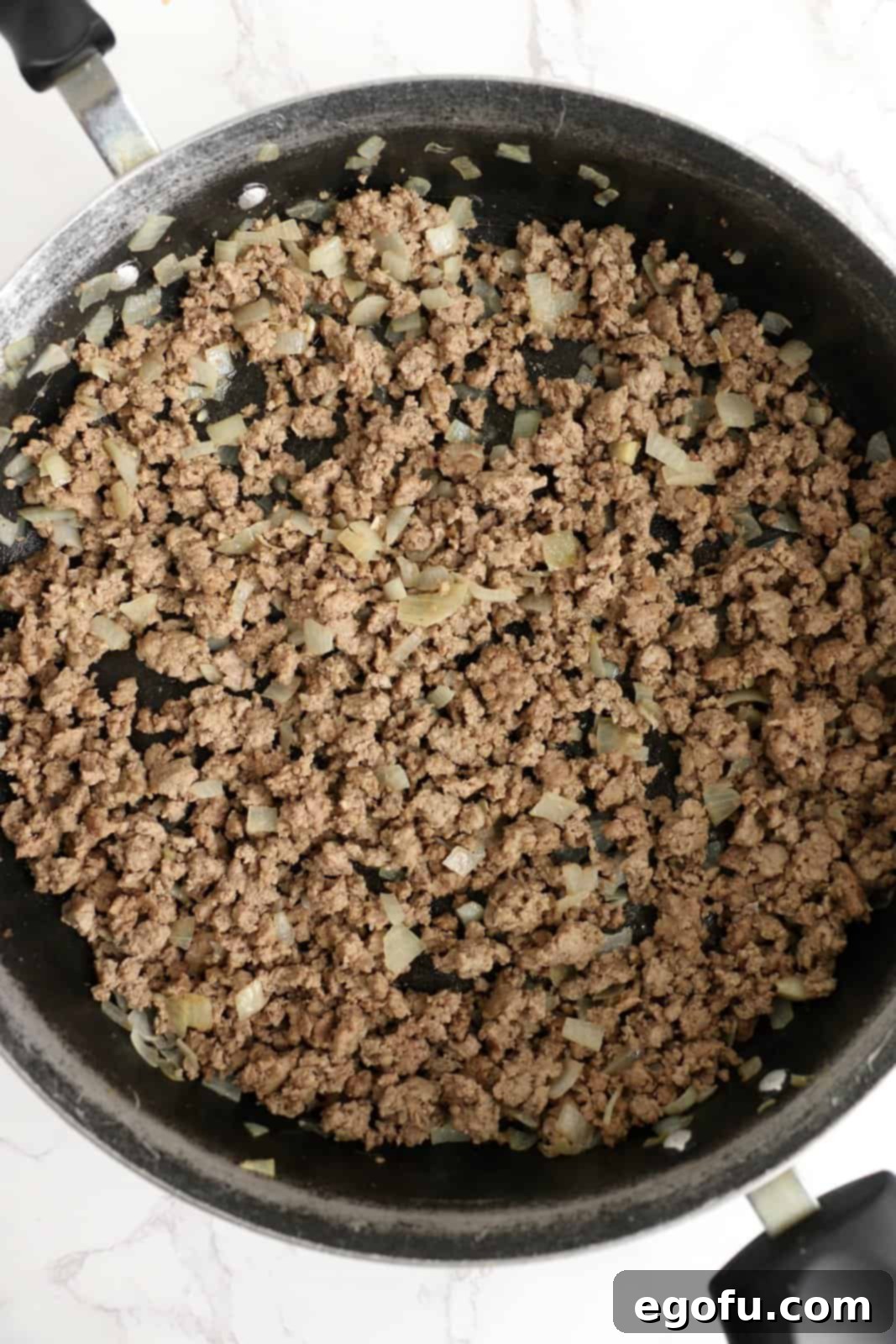
Step 2: Prepare the Tomatoes and Sauce Base. While your meat is browning, turn your attention to the tomatoes. Carefully remove the whole tomatoes from their cans, reserving all the juice within the cans – this liquid is vital for the sauce’s flavor and consistency. Dice the whole tomatoes to your preferred size, aiming for small, uniform pieces that will blend seamlessly into the sauce. In a large bowl, combine the diced tomatoes (along with their reserved juice), tomato paste, granulated sugar, Worcestershire sauce, Italian seasoning, dried basil, garlic powder, salt, and pepper.

Step 3: Combine and Season the Tomato Mixture. Stir the tomato mixture thoroughly until all the ingredients are well combined. Ensure the tomato paste is fully incorporated and the seasonings are evenly distributed. This pre-mixing helps to blend the flavors before they are introduced to the meat.

Step 4: Drain Fat and Add Dry Sauce Mix. Once the ground beef is fully cooked and the onions are tender, carefully drain any excess fat from the skillet. This step is crucial for preventing a greasy sauce. Return the skillet to the heat and stir in the packet of dry spaghetti sauce mix. The dry mix will cling to the beef, adding a boost of classic flavor and serving as a thickening agent for the sauce.

Step 5: Simmer the Sauce. Pour the prepared tomato mixture into the skillet with the seasoned ground beef. Stir everything together thoroughly, ensuring the meat is fully coated in the sauce. Bring the mixture to a slow boil, then reduce the heat to a gentle simmer. Allow the sauce to simmer for 10-15 minutes, stirring occasionally. This simmering time is vital for the flavors to meld and deepen, and for the sauce to thicken to the perfect consistency.

Step 6: Cook the Spaghetti. While your delicious meat sauce is simmering and developing its rich flavors, prepare your spaghetti noodles. Follow the package directions for cooking, aiming for an al dente texture – firm to the bite. Once cooked, drain the spaghetti thoroughly. Timing this step correctly means your pasta will be ready just as the sauce reaches its peak.

Step 7: Combine Pasta and Sauce. Once the sauce has thickened to your desired consistency, add the cooked and drained spaghetti directly into the skillet with the meat sauce. Stir gently but thoroughly, ensuring every strand of spaghetti is coated with the rich, savory sauce. This step allows the pasta to absorb some of the sauce’s flavor, making each bite truly satisfying.
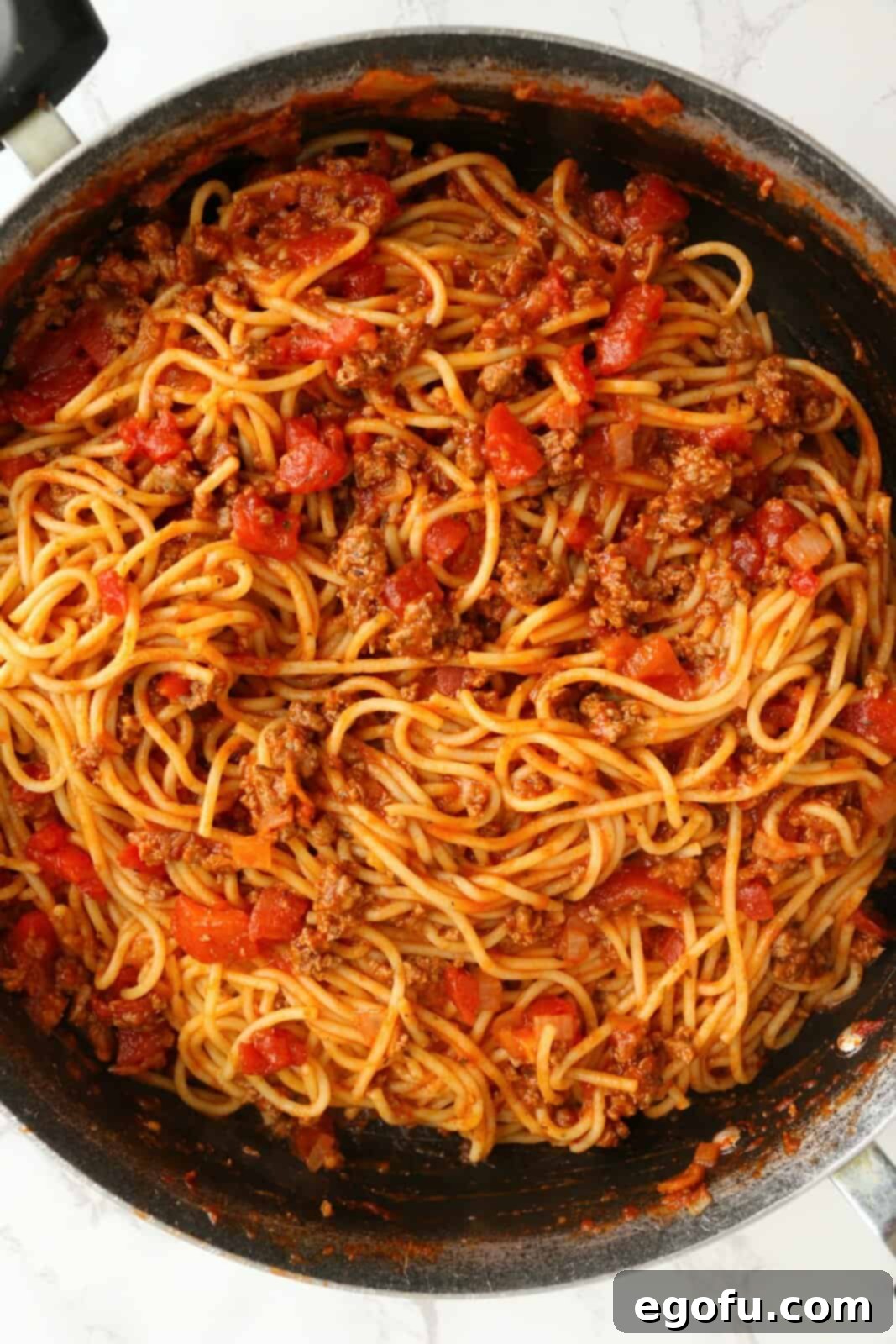
Step 8: Garnish and Serve. With the spaghetti and sauce perfectly combined, it’s time for the finishing touch. Generously sprinkle shredded Parmesan cheese over the top of the spaghetti. The warmth of the dish will slightly melt the cheese, enhancing its creamy texture and tangy flavor. Serve immediately and savor the comforting, nostalgic taste of homemade School Cafeteria Spaghetti.
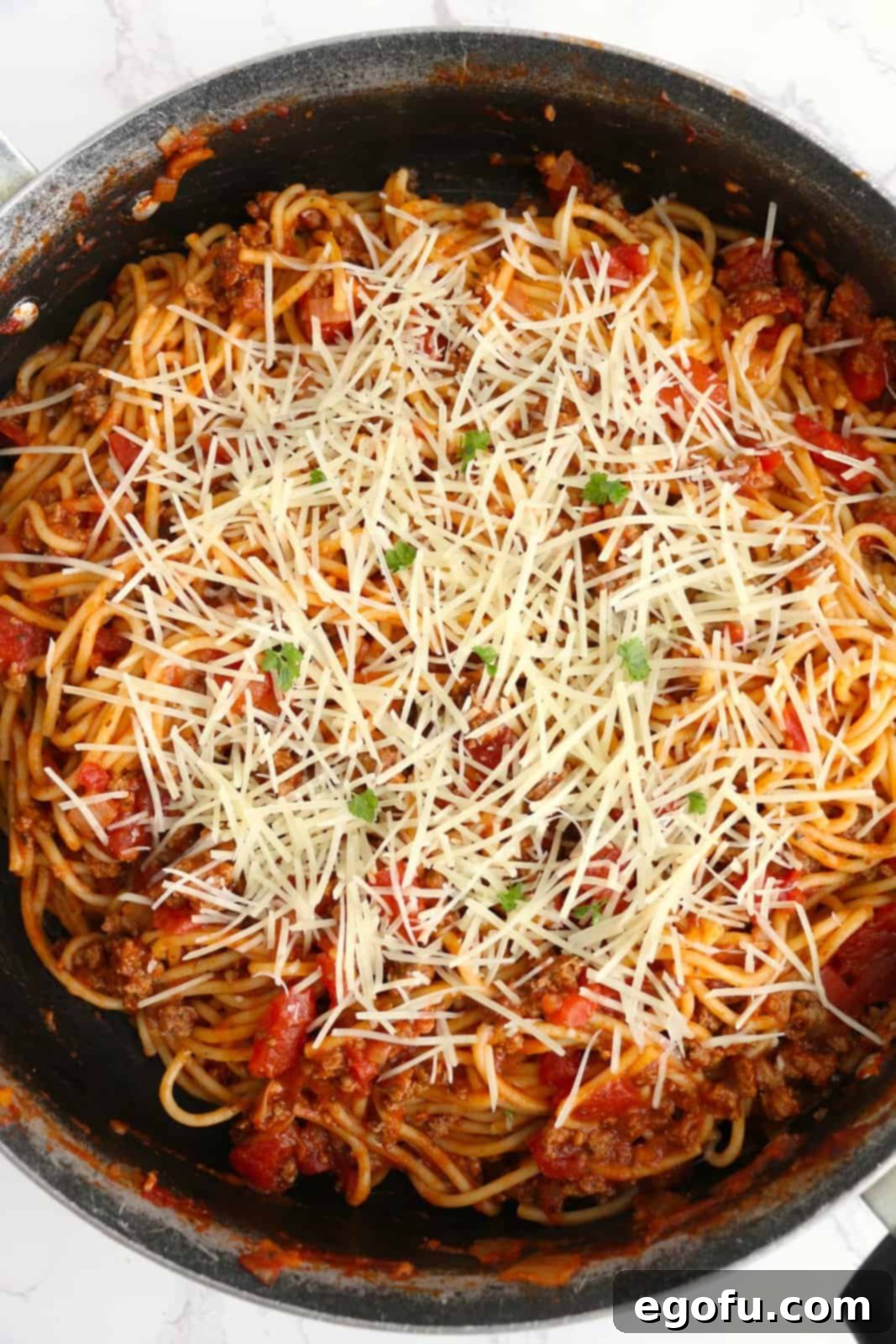
Serve this delightful dish hot and watch as it brings smiles and perhaps a few cherished memories to your dining table. Enjoy!
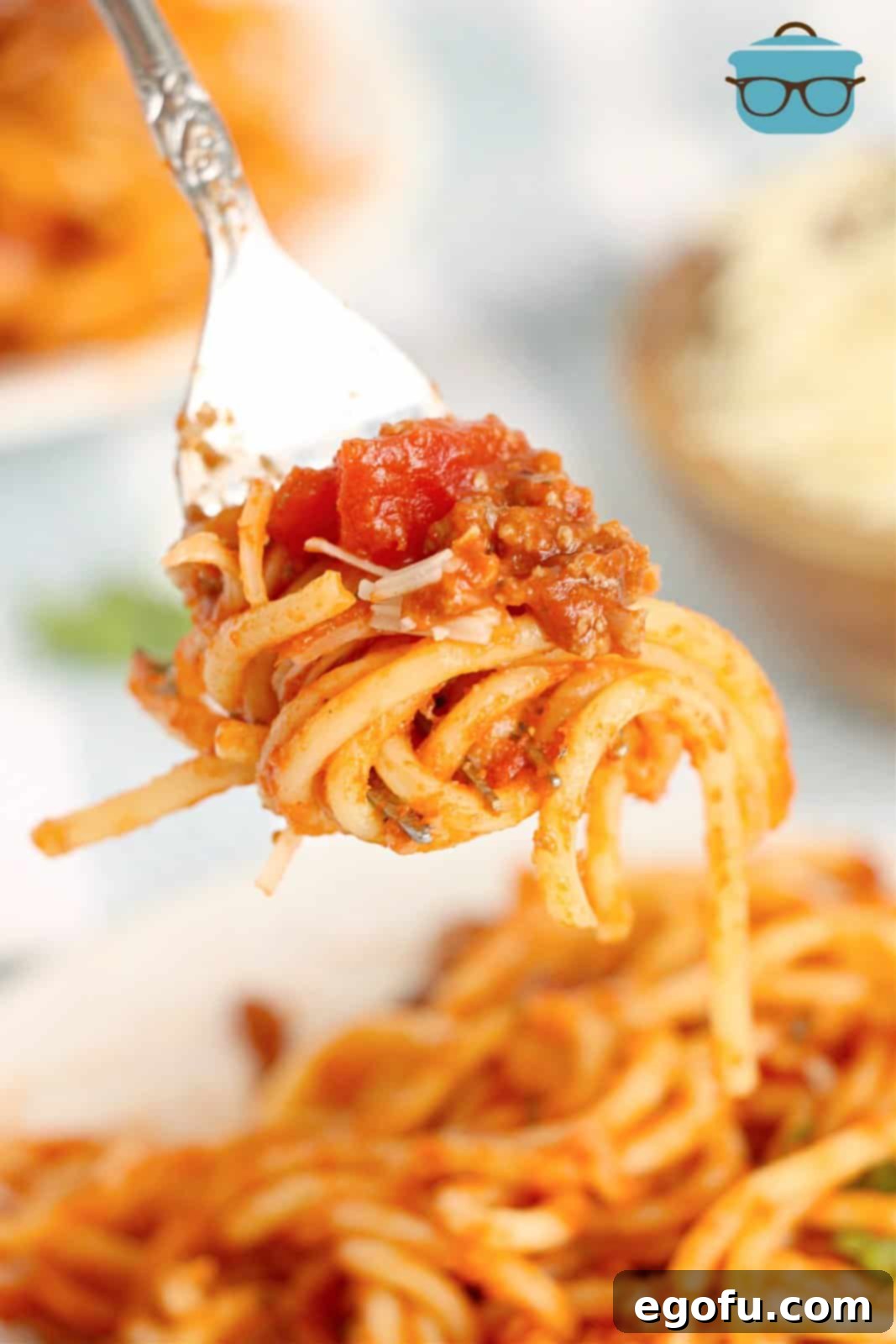
Craving More Nostalgic & Comforting Recipes?
If this School Cafeteria Spaghetti sparked a longing for more classic, comforting flavors from yesteryear, you’re in luck! We have a treasure trove of recipes that aim to recreate those simple, yet utterly delicious, dishes that bring warmth to your soul. From school lunchroom favorites to hearty, family-style meals, explore these additional recipes to continue your culinary journey down memory lane:
- Cafeteria Noodles
- Cafeteria Chili
- Rectangle School Pizza
- Copycat Bosco Sticks
- Lunch Lady Peanut Butter Cookies
- Million Dollar Spaghetti
- Taco Spaghetti
- Chicken Spaghetti
- Homemade Spaghetti Sauce
- Spaghetti “Cupcakes”
- Cowboy Spaghetti
- School Cafeteria Spaghetti
- Sour Cream Noodle Bake
- Crock Pot Lasagna
- Easy Baked Ziti
- Spasagna {Baked Spaghetti}
- Crock Pot Spaghetti and Meatballs

School Cafeteria Spaghetti
Print
Pin
Rate
Ingredients
- 1 pound ground beef
- ¼ cup minced yellow onion
- 1 packet dry spaghetti sauce mix
- 56 ounces whole tomatoes, undrained (2-28 ounce cans )
- 6 ounce can tomato paste
- 1 Tablespoon granulated sugar
- 1 teaspoon Worcestershire sauce
- 1 teaspoon Italian seasoning
- 1 teaspoon dried basil
- 1 teaspoon garlic powder
- 1 teaspoon salt
- ½ teaspoon pepper
- 1 pound spaghetti
- ½ cup shredded parmesan cheese
Instructions
- In a large skillet over medium heat, brown ground beef with minced onions. Be sure to smash beef into small pieces while cooking to achieve the characteristic texture.
- While the meat is cooking, prepare your tomatoes. Remove whole tomatoes from the can and dice them to your preferred size. Remember to keep the tomato juice in the can for the next step, as it’s integral to the sauce’s flavor.
- In a large bowl, combine the diced tomatoes with their juice, tomato paste, granulated sugar, Worcestershire sauce, Italian seasoning, dried basil, garlic powder, salt, and pepper.
- Stir the tomato mixture together thoroughly until all ingredients are well incorporated and the flavors begin to meld.
- When the meat is fully cooked, carefully drain any rendered fat from the skillet. Then, stir in the dry spaghetti sauce mix, ensuring it coats the beef evenly.
- Add the prepared tomato mixture to the meat in the skillet and stir everything together to combine thoroughly.
- Bring the sauce to a slow boil, then reduce the heat and allow it to simmer gently for 10-15 minutes, or until the sauce has thickened to your desired consistency and the flavors have deepened.
- While the meat and tomato mixture is simmering, prepare your spaghetti noodles according to the package directions, ensuring they are cooked al dente. Drain the cooked spaghetti well.
- Once the sauce is thickened, add the cooked pasta to the skillet and stir it into the sauce, making sure every strand is coated.
- Serve the spaghetti immediately, garnished with a generous sprinkle of shredded Parmesan cheese on top. Enjoy your nostalgic journey!
Notes
- Meat Variations: Feel free to experiment with different ground meats beyond beef. Ground chicken, turkey, or even a flavorful Italian sausage can be used as substitutes, or combined with beef for added depth. Adjust cooking times accordingly.
- Pasta Alternatives: While spaghetti is traditional, this versatile sauce pairs well with other pasta shapes like rotini, penne, or even elbow macaroni. Just remember to use a full pound of pasta to maintain the ideal sauce-to-pasta ratio.
- Freezing for Later: This recipe is excellent for meal prepping. The cooked spaghetti can be frozen in an airtight container for up to 3 months. Thaw overnight in the refrigerator and reheat gently in the microwave or on the stovetop.
- Tomato Texture: For a truly authentic texture, manually dicing whole canned tomatoes allows for more control over chunk size. However, for sheer convenience, canned diced tomatoes can certainly be used, though the texture might be slightly different.
- The Role of Sugar: The addition of sugar is highly recommended. It helps to neutralize the acidity of the tomatoes, creating a more balanced and harmonious flavor profile in the sauce without making it overly sweet.
Nutrition
Nutritional Disclaimer
“The Country Cook” is not a dietician or nutritionist, and any nutritional information shared is an estimate. If calorie count and other nutritional values are important to you, we recommend running the ingredients through whichever online nutritional calculator you prefer. Calories and other nutritional values can vary quite a bit depending on which brands were used.
